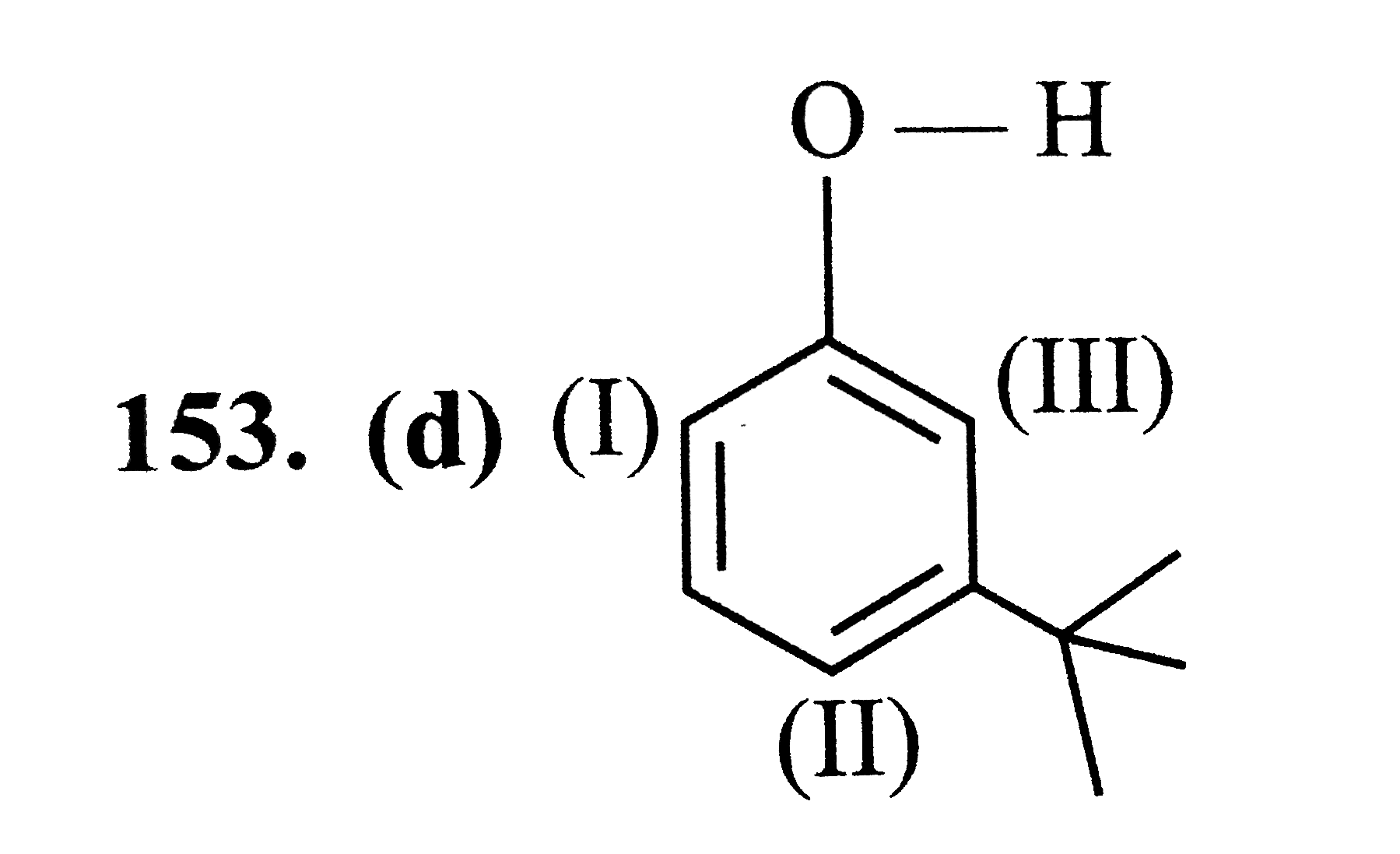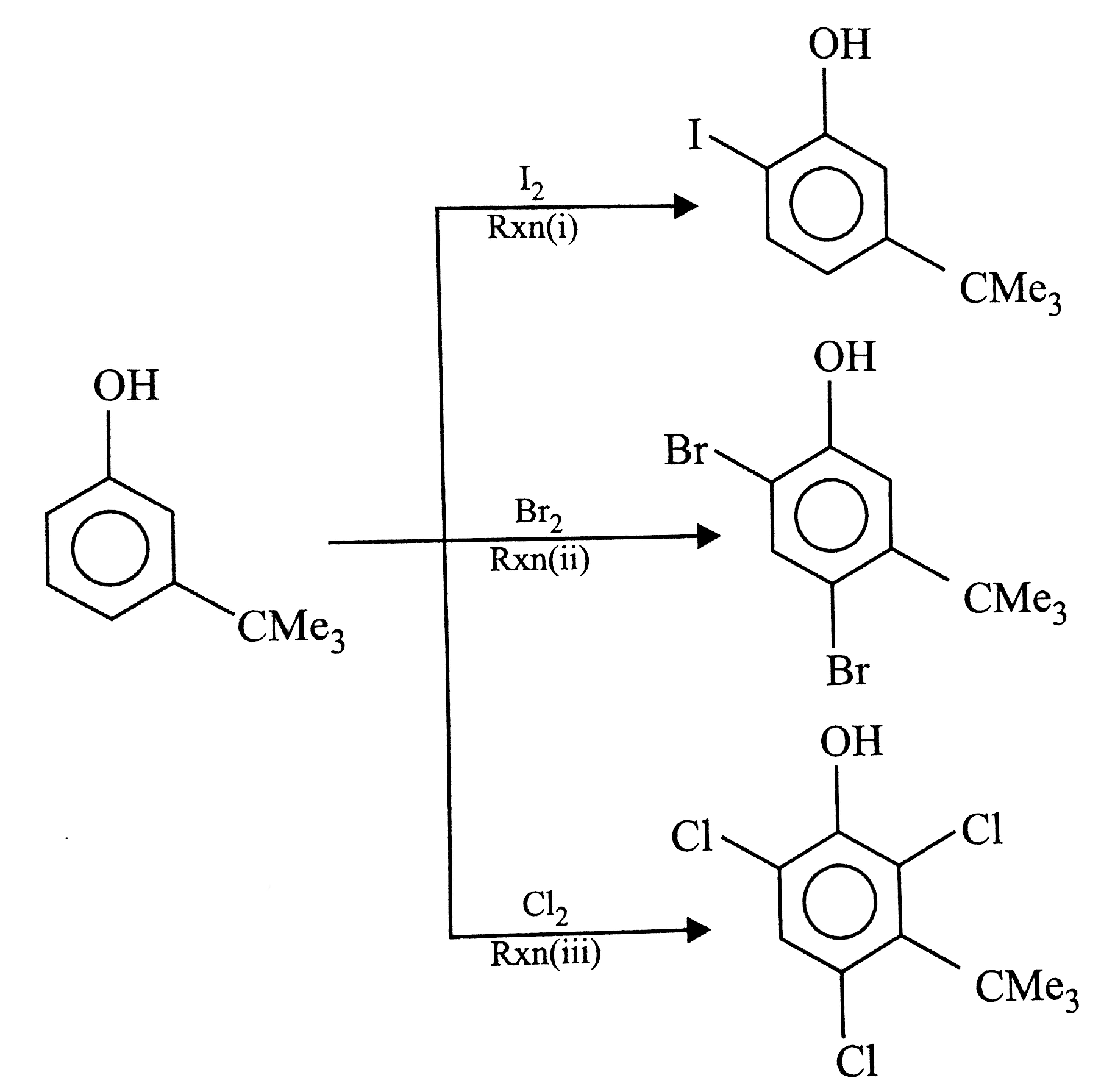Explore topic-wise InterviewSolutions in .
This section includes InterviewSolutions, each offering curated multiple-choice questions to sharpen your knowledge and support exam preparation. Choose a topic below to get started.
| 23851. |
Write the mechanism of the reaction of HI with methoxybenzene. |
Answer» SOLUTION : . .
|
|
| 23852. |
Which colloidal sol is not prepared by bredig's arc method ? |
|
Answer» Gold |
|
| 23853. |
When an excess electrolyte is added to a colloidal sol it |
|
Answer» GETS COAGULATED |
|
| 23854. |
X mole of KCl and Y mole of BaCl_(2) are dissolved in 1kg of water. Given (x+y)=0.1 and K_(f)=1.85 "kmolal^(-1), what is the observed range of Delta T_(f) If the ratio of x to y is varied |
|
Answer» `0.37 to 0.55` |
|
| 23855. |
Which of the following has highest b.p.t ? |
|
Answer» `C_2H_5OH` |
|
| 23856. |
Which of the following properties would you not expect copper to exhibit: |
|
Answer» Malleability |
|
| 23857. |
Which of the following processes is accompanied by decrease in entropy ? |
|
Answer» EVAPORATION of water |
|
| 23858. |
Which bond is expected to be the least polar? |
|
Answer» `O-F` |
|
| 23859. |
Write IUPAC name ofproduct expected from reaction of sodium methoxide andiosbutyl bromide. |
|
Answer» 2-Methoxybutane |
|
| 23860. |
Whichof the followingamineis mostbasicin nature ? |
|
Answer» 2,4-dichloro ANILINE |
|
| 23861. |
Which of the following solutions has the highest equivalent conductance at infinite dilution ? |
| Answer» Solution :Complete DISSOCIATION | |
| 23862. |
What is the formula of chocolate coloured ppt ? |
|
Answer» `Fe_(4)[Fe(CN)_(6)]` `ii 2CuSO_(4)+4KI to 2K_(2)SO_(4)+underset("white ppt.")(CuI_(2)+I_(2)darr` `I_(2)+2Na_(2)S_(2)O_(3)to 2NaI+Na_(2)S_(4)O_(6)` `(iii) 2CU^(2+)+K_(4)[Fe(CN)_(6)]to underset("ppt.")underset("(chocolate)")underset("Red-brown")` |
|
| 23863. |
Which of the following cannot exist as Zwitter ion ? |
|
Answer» Glycine |
|
| 23864. |
Which one is the most reactive towards S_(N^(1)) reaction? |
|
Answer» `C_(6)H_(5)CH(C_(6)H_(5))BR` |
|
| 23865. |
Which among the following is a acidic flux |
|
Answer» `SiO_(2)` |
|
| 23866. |
Which compound does not undergo hydrolysis? |
|
Answer» `SF_(6)` DUE to steric FACTOR |
|
| 23867. |
Which of the following isomeric pairs shows ionisation isomerism ? |
|
Answer» `[Co(NH_(3))_(6)][Cr(CN)_(6)]` and `[Cr(NH_(3))_(6)][Co(CN)_(6)]` |
|
| 23868. |
Which out of the followingis//are transition elements //s and why ? Zn,Ag,Cd,Au. |
| Answer» SOLUTION :Agand AU are TRANSITION elementsbecause they have INCOMPLETELY FILLED d-subshell. | |
| 23869. |
Which one of the following plots is correct for a first order reaction? |
|
Answer»

|
|
| 23870. |
What is the difference when a concentrated solution of KCl is shaken with blood charcoal in one case and a dilute solution of KCl in the second case ? |
| Answer» SOLUTION :With CONCENTRATED solution, there is POSITIVE ADSORPTION but with DILUTE solution, there is negative adsorption. | |
| 23871. |
Which of thefollowingspeciesshowsthe maximummagneticmoment ? |
|
Answer» ` MN^(6 +) `  THUS,` Fe^ (3+ ) `will showmaximum magneticmoment. |
|
| 23872. |
When O_(2) is adsorbed on a metallic surface, electron transfer electron transfer occurs from the metal to O_(2). The TRUE statement (s) regarding this adsorption is (are) |
|
Answer» `O_(2)` is physisorbed |
|
| 23873. |
What happens when KMnO_4 is heated ? |
|
Answer» Solution :It CHANGES into `K_(2)MnO_(4),MnO_(2) and O_(2)` `UNDERSET("DARK pink")(2KMnO_4) OVERSET(Delta)rarr underset("Green")(K_2MnO_4) + MnO_2 + O_2` |
|
| 23874. |
Which of the following is soluble in water ?(C Cl_4,C_6H_6,CH_3OH_,C_2H_6) |
| Answer» SOLUTION :`CH_3OH` | |
| 23876. |
Two centre three electron (2e, -3e^(-)), Bond is present in is present in :- |
|
Answer» NITRIC OXIDE |
|
| 23877. |
When vapours of an alcohol are passed over hot reduced copper, alcohol is converted into alkene, the alcohol is |
|
Answer» Primary |
|
| 23878. |
The reactivity order of haildes for dehydro halogenation is: |
|
Answer» `RF gt RCL gt RBr gt RI` |
|
| 23879. |
The reactivity of xenon is attributed to |
|
Answer» small atomic size of xenon |
|
| 23880. |
The reactivity order of alkyl halides depends upon : |
|
Answer» Nature of alkyl GROUP only |
|
| 23881. |
The reactivity of the compounds (i) MeBr (ii) PhCH_2Br (iii) MeCl (iv) p-MeOC_6H_4 Br decreases as |
|
Answer» (i)gt(II)gt(III)gt(IV) |
|
| 23882. |
The reactivityof hydrogenatomsattachedtocarbon atominan alkane hasthe order. |
|
Answer» TERTIARY GT PRIMARY gtsecondary |
|
| 23883. |
The reactivity of following compound in electrophilic substitution reaction is in the order of {:(1., C_(6)H_(5)-CH_(3), 3.,C_(6)H_(5)-Cl),(2.,C_(6)H_(5)-Br,4.,C_(6)H_(5)-NO_(2)):} |
|
Answer» `1 gt 2 gt 3 gt 4` |
|
| 23884. |
The reactivity of hydrogen atom in an alkane towards substitution by bromine atom is |
|
Answer» `1^@H GT 2^@H gt 3^@H` |
|
| 23885. |
The reactivity of halogen atom is minimum in |
|
Answer» PROPYL chloride |
|
| 23886. |
The reactivity of ethyl chloride is : |
|
Answer» More or less equal to that of BENZYL CHLORIDE |
|
| 23887. |
The reactivity of compound Z with different hologebs under apppropriate conditions is give below: The observed pattern of electrophilic substitution cannot by explained by |
|
Answer» The steric effect of the halogen  (I),(II) and (III) are probable positions as per electronic effect of `OH` group WHER electrophile can attack and due to steric HINDRANCE at (II) and (III) positions bulky electrophiles are not PREFERRED like I only preferred at position I, Bromine at positions `II`and `I` is while chlorine at all three positions. 
|
|
| 23888. |
The reactivity of copper is low because of its |
|
Answer» HIGH enthalphy of SUBLIMATION and LOW IONIZATION ENERGY |
|
| 23889. |
The reactivity of carboxylic acid derivatives from highest reactivity to lowest reactivity is |
|
Answer» ACID anhydride `gt` acid CHLORIDE `gt` ESTER `gt` amide |
|
| 23890. |
The reactivity of alcohols with respect to oxidation decreases with |
|
Answer» INCREASE in `ALPHA`- H |
|
| 23891. |
The reactivity of acid derivatives in general follows the order: The above order of reactivity can be explained in terms of the: (i) Basicity of leaving group (ii) Resonance effect (iii) Inductive effect Weaker is the basic character of leaving group, more is the reactivity of acid derivative. In general, all the acid derivatives show resonance as follows: More is the stabilization, lesser is the reactivity and vice -versa. Acid derivatives although contain -Coverset(O)overset(||)C- group yet do not undergo the usual properties of carbonyl group. It is due to : |
|
Answer» INDUCTIVE EFFECT |
|
| 23892. |
The reactivity of acid derivatives in general follows the order: The above order of reactivity can be explained in terms of the: (i) Basicity of leaving group (ii) Resonance effect (iii) Inductive effect Weaker is the basic character of leaving group, more is the reactivity of acid derivative. In general, all the acid derivatives show resonance as follows: More is the stabilization, lesser is the reactivity and vice -versa. Which is the most reactive acid derivative? |
|
Answer» R-COCl |
|
| 23893. |
The reactivity of acid derivatives in general follows the order: The above order of reactivity can be explained in terms of the: (i) Basicity of leaving group (ii) Resonance effect (iii) Inductive effect Weaker is the basic character of leaving group, more is the reactivity of acid derivative. In general, all the acid derivatives show resonance as follows: More is the stabilization, lesser is the reactivity and vice -versa. Which among the following anions is the most basic ? |
|
Answer» `NH_(2)` |
|
| 23894. |
The reactivity of acid derivatives in general follows the order : The above order of reactivity can be explained in terms of the : (i) Basicity of leaving group (ii) Resonance effect (iii) Inductive effect Weaker is the basic character of leaving group, more is the reactivity of acid derivative. In general, all the acid derivatives show resonance as follows: More is the stablization, lesser is the reactivity and vice-versa. Acid derivatives although contain -overset(O)overset(||)C- group, yet do not undergo the usual properties of carbonyl group. It is due to |
|
Answer» INDUCTIVE effect |
|
| 23895. |
The reactivity of acid derivatives in general follows the order : The above order of reactivity can be explained in terms of the : (i) Basicity of leaving group (ii) Resonance effect (iii) Inductive effect Weaker is the basic character of leaving group, more is the reactivity of acid derivative. In general, all the acid derivatives show resonance as follows: More is the stablization, lesser is the reactivity and vice-versa. Which of the following compounds will be most easily hydrolysed ? |
| Answer» Answer :A | |
| 23896. |
The reactivity of acid derivatives in general follows the order : The above order of reactivity can be explained in terms of the : (i) Basicity of leaving group (ii) Resonance effect (iii) Inductive effect Weaker is the basic character of leaving group, more is the reactivity of acid derivative. In general, all the acid derivatives show resonance as follows: More is the stablization, lesser is the reactivity and vice-versa. Which of the most reactive acid derivative ? |
|
Answer» R-COCl |
|
| 23897. |
The reactivity of acid derivatives in general follows the order : The above order of reactivity can be explained in terms of the : (i) Basicity of leaving group (ii) Resonance effect (iii) Inductive effect Weaker is the basic character of leaving group, more is the reactivity of acid derivative. In general, all the acid derivatives show resonance as follows: More is the stablization, lesser is the reactivity and vice-versa. Which among the following anions is the most basic ? |
|
Answer» `vecNH_(2)` |
|
| 23898. |
The reactivities of methyl chloride (A) propyl chloride (B) and chlorobenzene © are inthe order : |
|
Answer» `A GT B gt C` |
|
| 23899. |
The reactivities of acid halides (I), anhydrides (II),esters(III) and amides (IV) with nucleophilic reagents follow the order |
|
Answer» `IgtIIgtIIIgtIV` |
|
| 23900. |
The reactive species in the nitration of benzene is |
|
Answer» `NO_(3)` |
|



